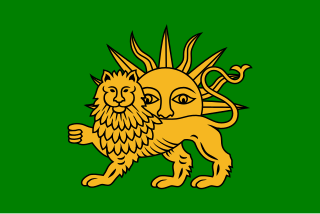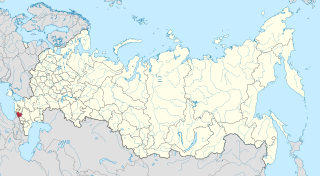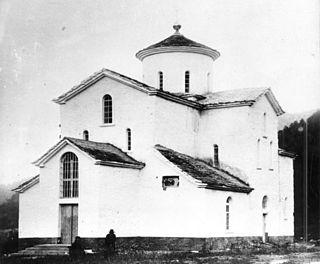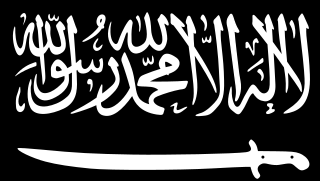Kabardino-Balkar Autonomous Soviet Socialist Republic Кабардино-Балкарская АССР (Russian) Къэбэрдей-Балъкъэр АССР (Kabardian) Къабарты-Малкъар АССР (Karachay-Balkar) | |||||||||
|---|---|---|---|---|---|---|---|---|---|
| 1936–1991 | |||||||||
 Location of the Kabardino-Balkar ASSR within the Russian SFSR. | |||||||||
| Status | Autonomous republic of the Russian SFSR | ||||||||
| Capital | Nalchik | ||||||||
| Government | Autonomous Soviet Socialist Republic | ||||||||
| History | |||||||||
• Established | 1936 | ||||||||
| 1944 | |||||||||
• Name restored | 1957 | ||||||||
• Disestablished | 1991 | ||||||||
| |||||||||
The Kabardino-Balkar Autonomous Soviet Socialist Republic was an autonomous republic of the Russian Soviet Federative Socialist Republic, in the former Soviet Union, and was originally a part of the Mountain Autonomous Soviet Socialist Republic. On 16 January 1922 the region was detached from the Mountain ASSR and the Kabardino-Balkar Autonomous Oblast on 1 September 1921.[ vague ] It became an autonomous republic on 5 December 1936. On 30 January 1991, the Kabardino-Balkar ASSR declared state sovereignty. [1] It is now the Kabardino-Balkaria republic, a federal subject of the Russian Federation. The Kabardino-Balkar ASSR bordered no other sovereign states during the existence of the Soviet Union.

The Russian Soviet Federative Socialist Republic, previously known as the Russian Soviet Republic and the Russian Socialist Federative Soviet Republic, as well as being unofficially known as the Russian Federation, Soviet Russia, or simply Russia, was an independent state from 1917 to 1922, and afterwards the largest, most populous and most economically developed of the 15 Soviet socialist republics of the Soviet Union (USSR) from 1922 to 1990, then a sovereign part of the Soviet Union with priority of Russian laws over Union-level legislation in 1990 and 1991, during the last two years of the existence of the USSR. The Russian Republic comprised sixteen smaller constituent units of autonomous republics, five autonomous oblasts, ten autonomous okrugs, six krais and forty oblasts. Russians formed the largest ethnic group. The capital of the Russian SFSR was Moscow and the other major urban centers included Leningrad, Novosibirsk, Yekaterinburg, Nizhny Novgorod and Samara.

The Soviet Union, officially the Union of Soviet Socialist Republics (USSR), was a socialist state in Eurasia that existed from 1922 to 1991. Nominally a union of multiple national Soviet republics, its government and economy were highly centralized. The country was a one-party state, governed by the Communist Party with Moscow as its capital in its largest republic, the Russian Soviet Federative Socialist Republic. Other major urban centres were Leningrad, Kiev, Minsk, Alma-Ata, and Novosibirsk. It spanned over 10,000 kilometres east to west across 11 time zones, and over 7,200 kilometres north to south. It had five climate zones: tundra, taiga, steppes, desert and mountains.

The Mountain Autonomous Soviet Socialist Republic or Mountain ASSR was a short-lived autonomous republic within the Russian SFSR in the Northern Caucasus that existed from January 20, 1921, to July 7, 1924. The Mountainous Republic of the Northern Caucasus was created from parts of the Kuban and Terek Oblasts by the indigenous nationalities after the Russian Revolution; however, Soviet rule was installed on this territory after the Red Army conquered the Northern Caucasus in the course of the Russian Civil War, and the former republic was transformed into a Soviet one. The area of the republic was over 73,000 square kilometres (28,000 sq mi), and the population was about 800,000. It comprised six okrugs: Balkar, Chechen, Kabardian, Karachay, Nazran (Ingushetia), and Vladikavkaz Okrug (Ossetia) and had two cities: Grozny and Vladikavkaz. In addition, a special autonomy was provided to the Terek Cossacks: Sunzha Cossack Okrug, which included a large enclave in northern Ingushetia, and a smaller one bordering Grozny. Its boundaries approximated those of classical Zyx.
Contents
Like the Chechen-Ingush Autonomous Soviet Socialist Republic, the Kabardino-Balkar ASSR was shared by two nationalities. Both autonomous republics resided as part of the Russian Soviet Federative Socialist Republic and featured Russians as the ethnic majority. [2] [ full citation needed ][ not in citation given ]



















